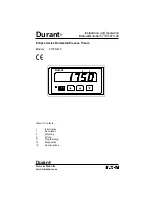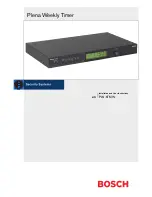
3
time in the range of 0.1 to 99.9 seconds. Should the time between pulses ever ex-
ceed the zero time, the Eclipse will immediately update the display to zero, whether
in rate or process time mode.
Relay Output Option Board
The optional relay board contains two form C (normally open and normally closed
contacts) relays. Each relay has an adjustable high and low setpoint. The relays act
as alarms by turning ON when the displayed rate or time is greater than the high
setpoint OR less than the low setpoint. If the low setpoint is greater than the high
setpoint, the relay turns ON when the rate or time meets both conditions; less than
the low setpoint AND greater than the high setpoint.
Once a relay turns ON, it stays ON until the rate or time returns back across the
setpoint and then some. The and then some is called hysteresis. Hysteresis is a
programmable value that is common to both setpoints and both relays. This means
that a relay turns OFF when the display is less than or equal to the high setpoint
minus the hysteresis value, or when the display is greater than or equal to the low
setpoint plus the hysteresis value. Should an overlap occur between ON and OFF
conditions, the ON condition overrides the OFF condition.
Example: Relay Output Operation
High Setpoint = 250
Relay ON above 250
Low Setpoint = 220
Relay ON below 220
Hysteresis =
10
Relay OFF between 230 and 240
OFF
ON
ON
Displayed
Rate or
Time
OFF
ON
ON
200 210 220 230 240 250 260
Analog Retransmission Option Board
The optional analog output board provides linear 0-10 V and 4-20 mA signals pro-
portional to the displayed rate or time. When the displayed value is equal to the
programmed output offset value, the output voltage is zero and the output current is
4 mA. When the displayed value is equal to the programmed output full scale value,
the output voltage is 10 V and the output current is 20 mA.
DESCRIPTION cont.


































